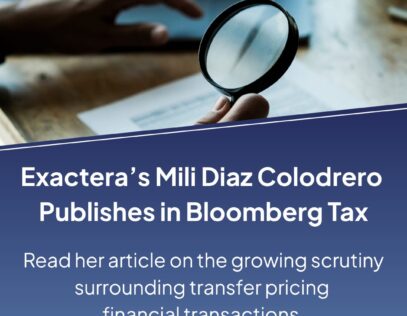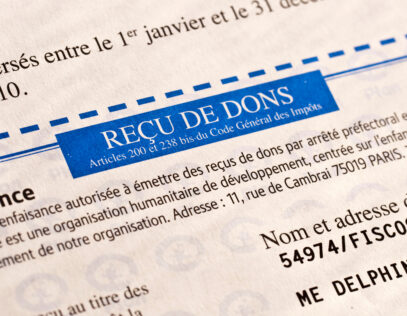Multinational businesses can draw several lessons about transfer pricing methodology from the landmark Coca-Cola case.
- Transactions involving the transfer or license of unique and valuable intangible property (“IP”) often will not have reliable comparable uncontrolled transactions (“CUTs”) to form a benchmark of arm’s length remuneration. In the absence of reliable CUTs, the Comparable Profits Method (“CPM”) which is analogous to the OECD’s Transactional Net Margin Method (“TNMM”), may be the best method to indirectly determine an arm’s length royalty in cases where only one of the two entities contributes IP.
- Second, it may be appropriate and prudent to utilize the CPM as a corroborative method in cases where only one of the two entities contributes IP. When reliable CUTs can be identified, the taxpayer may wish to use the CUTs to form a range of arm’s-length royalty rates providing some flexibility in the selection of an intercompany royalty rate. Taxpayers looking for an additional layer of risk management may wish to employ the CPM to corroborate their selected intercompany royalty rate.
Background:
The IRS used the CPM to determine that Coca-Cola was under-compensated for the license of its IP to its foreign manufacturing affiliates. Subsequently in 2015, the IRS allocated an additional $9.4B of income to Coca-Cola’s 2007-2009 Federal income tax returns, resulting in additional tax liabilities of $3.3B. Coca-Cola disputed the adjustment and took the issue to the US Tax Court (the “Tax Court”), resulting in a five-year litigation.
Transfer pricing continues to be one of the riskiest areas for multinational corporations due to various policy initiatives and tax legislation that put an emphasis on transparency and ensuring that profits are taxed where economic activities are performed and where value is created. These include the OECD’s Base Erosion and Profit Shifting (“BEPS”) framework, enactment or proposed enactment of digital services taxation, elements of the Tax Cuts and Jobs Act (“TCJA”), and enhanced (and sometimes coordinated) global enforcement.
Transfer pricing disputes have been on the rise in recent years with some of the largest companies in the world under scrutiny, particularly for companies that maintain cost-sharing arrangements, intercompany loans, and controlled transfers or licenses of intangible property. In the past year alone, landmark cases have been resolved or reached significant milestones that have had major impacts on multinational businesses.
The Coca-Cola Company & Subsidiaries v. Commissioner of Internal Revenue:
Coca-Cola licensed to its foreign manufacturing affiliates certain IP necessary to manufacture, sell, and distribute Coca-Cola concentrate. Specifically, this IP included trademarks, product names, logos, patents, secret formulas, and proprietary manufacturing processes. The manufacturing affiliates sold and distributed the concentrate to unrelated bottlers who produced finished beverages for sale to distributors and retailers around the world.
During 2007-2009, the manufacturing affiliates compensated Coca-Cola for the use of its IP under a formulary apportionment method to which Coca-Cola and the IRS had agreed in 1996 when settling Coca-Cola’s tax liabilities for 1987-1995. The formulary apportionment permitted the foreign manufacturing affiliates to retain profit equal to 10% of their gross sales, with the remaining profit being split 50%-50% with Coca-Cola. While the IRS and Coca-Cola agreed to this method in resolving the company’s tax liabilities for 1987-1995, the agreement did not address what transfer pricing methodology would be used for years after 1995.
Under that method, the manufacturing affiliates were permitted to satisfy their royalty obligations by paying actual royalties or by remitting dividend payments. During 2007-2009, the manufacturing affiliates remitted to Coca-Cola dividends of about US$1.8 billion in satisfaction of their royalty obligations.
Upon examining Coca-Cola’s 2007-2009 returns, the IRS concluded that the 10-50-50 formulary apportionment did not reflect arm’s-length pricing because it overcompensated the foreign manufacturing affiliates and under-compensated Coca-Cola for the use of its IP. This determination was made using the CPM, treating the foreign manufacturing affiliates as the tested parties and the unrelated bottlers as comparables.
The IRS regarded the unrelated bottlers as comparable to the foreign manufacturing affiliates because they operated in the same industry, faced similar economic risks, had similar contractual relationships with Coca-Cola, employed many of the same intangibles (i.e. Coca-Cola’s trademarks, trade names, and logos), and ultimately shared in the same income stream from sales of Coca-Cola beverages. To apply the CPM, the IRS calculated the average return on assets (“ROA”) earned by the unrelated bottlers and applied the average ROA to the operating assets of Coca-Cola’s foreign manufacturing affiliates resulting in a deemed arm’s-length operating profit benchmark. Any income received by the foreign manufacturing affiliates in excess of that benchmark was reallocated to Coca-Cola.
Coca-Cola contended that its foreign manufacturing affiliates held rights (off-book) to certain marketing intangibles that were created when they financed consumer advertising in foreign markets, and therefore, should enjoy non-routine profits as “master franchisees.”
The IRS argued, however, that their application of the CPM left the foreign manufacturing affiliates with a return consistent with their functions, assets and risks.
The Tax Court opined that the burden of proof is on the taxpayer and that it must show that the IRS reached an unreasonable result by establishing that its income as reported reflects the results that would have been realized if uncontrolled taxpayers had engaged in the same transaction under the same circumstances. However, that typically requires evidence of CUTs and in cases such as this, involving unique and extremely valuable intangible property, CUTs may not exist. Therefore, the taxpayer may show that the IRS employed an unreasonable methodology by applying faulty assumptions, incorrect data, or an analysis that is inconsistent with the US transfer pricing regulations.
Further, the Tax Court noted that the CPM is ideally suited to determine the arm’s-length result between an owner and licensor of hard-to-value intangibles and an entity, which is engaged in routine activities such as the foreign manufacturing affiliates. Once the CPM determines the arm’s-length profit level for the foreign manufacturing affiliates, the residual income is allocated to the owner and licensor of intangibles.
It’s clear that an approach accepted by the IRS and other tax authorities in the past, such as the 10-50-50 approach of Coca-Cola, is not necessarily audit-proof in the future. It is important that multinational businesses work with their advisor to adopt a flexible approach to their transfer pricing policies and regularly update their transfer pricing studies to ensure the results of their intercompany transactions remain arm’s length.







